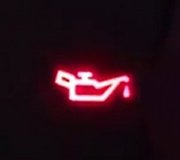Anyways, to the point. On startup with cold engine, I get around thirty eight pounds of pressure according to my gauge. As my engine warms, it drops down to about twenty pounds of pressure in regular driving (1000-2000 rpm). Then at idle, such as a ref light or stop sign, it sits right on twelve pounds of pressure. No noises, nothing abnormal. The oil pressure when I would give it gas would always be above the recommended(what I read online) ten pounds times 1000 rpm. If I hit 4000 rpm, my oil pressure hits about forty five to fifty. No check engine lights. I just changed the oil the day after I purchased it. Oil levels have not dropped at all since and I have put almost four hundred miles on since. No oil on the ground.
That part above is before today, when I took it to the service department of my local Chevrolet dealership. They hooked up their gauges and determined it does run a little low but my oil sending unit was bad. Had them replace that as well as the screen below it. Then, I took off to try to get to work. Noticed it would not go above about twenty four pounds of pressure, even if I punched it up to 3500 to 4000 rpm. It now idles at about eight pounds of pressure, according to my gauge.
I returned it to the dealer to reassess the problem. He hooked his computer up and it was reading about twelve pounds of pressure at idle (computer reads "bottom end" oil pressure?), When he revved up to about 3000 rpm the pressure climbed with it on his computer screen. Now they tell my "a cam may be trying to spin out" and there is nothing more they can do except put a new motor in it for me. For at least $8,500.00.
So, I called off work and returned home. I now have a check engine light code P0521, which is the code for low engine oil pressure. The engine still does not appear to be making any noises. No knocking or clanking of any sort, even idling at eight pounds.
My question(s) is, what should I do now? I am going to change the oil again this weekend, maybe use a thicker oil? Or maybe add a product for low oil pressure, such as a Lucas Oil product? Is it really possible my sensor was reading incorrectly, even though it was reading low? And my actual engine oil pressure or top end pressure was that low but the gauge was just reading it slightly higher?
I know it is hard to diagnose problems through the internet, but I certainly cannot afford to drop an engine in it right now. I have got to at least drag it out a couple of months some how. I know I can definitely get a cheaper engine not through the overpriced dealership. But jeez I am frustrated with this. Any help will be much appreciated.
Thursday, March 9th, 2017 AT 3:29 PM
